Alfred Russel Wallace
THE MALAY ARCHIPELAGO
The Land of the Orang-utan, and the Bird of Paradise
A Narrative of Travel, with Studies of Man and Nature
Edited and Introduced by Andrew Berry
PENGUIN  CLASSICS
CLASSICS
THE MALAY ARCHIPELAGO
ALFRED RUSSEL WALLACE (18231913) was, with Charles Darwin, the co-discoverer of the theory of evolution by natural selection. With four years intense field experience in the Amazon Basin and eight more among the islands of South-East Asia, he was also the pre-eminent tropical biologist of his day. He had a particular interest in the factors governing the geographical distribution of species, and famously discovered what would come to be called Wallaces Line, the biological discontinuity between the Asian and Australasian faunas. He is regarded today as the founder of the field of evolutionary biogeography. His account of his 185462 travels across South-East Asia, from Singapore to western New Guinea, The Malay Archipelago, was first published in 1869.
His other major works include the monumental Geographical Distribution of Animals and Island Life, which combined geology, geography and biology in innovative ways that remain topical today. Wallaces wide-ranging interests and strongly held opinions migrated far beyond biology, coming to encompass spiritualism, socialism and a host of other issues on which Wallace invariably identified passionately and eloquently with the underdog. Throughout his long life he continued to research, write and campaign on an extraordinary range of subjects.
ANDREW BERRY is currently a lecturer in Organismic and Evolutionary Biology at Harvard University. His research has combined field and laboratory methods to detect positive Darwinian selection (that is, adaptive evolution) at the molecular level in natural populations. In addition to technical articles, he has published in the London Review of Books, Slate and elsewhere. He has published two books: Infinite Tropics: An Alfred Russel Wallace Anthology (2002) and DNA: The Secret of Life with James D. Watson (2003).
To Charles Darwin, author of The Origin of Species, I dedicate this book, not only as a token of personal esteem and friendship but also to express my deep admiration for his genius and his works
Note on the Text
What follows is the text from first British edition of The Malay Archipelago. Please note that the original two volumes have been condensed into one, so there is no correspondence between page numbers in this edition and the original. Also, Wallaces appendix, On the Crania and the Languages of the Races of Man in the Malay Archipelago, has been excluded, as this appendix consists primarily of tables of phonetically rendered words from several different languages. In the text, we have preserved the place names used by Wallace, despite many now being superseded, but, to help the reader negotiate the complexity of evolving place names in an account that is unarguably rich in mentions of obscure places scattered across a broad (and, for many, unfamiliar) geographic region, we have added the current place name after the index entry for each original place name. For readers interested in particular locations, we have also included current names as primary index entries, but, for ease of reference from the text, we have stuck with Wallaces place names on maps. We have preserved the scientific names used by Wallace (and, also, his practice, unfamiliar to the modern scientific reader, of not italicizing the Latin names of species). Many of these names have since been revised. For example, the butterfly Wallace named in honour of his friend James Brooke, Ornithoptera Brookeana, is today called Trogonoptera brookiana. Because the taxonomy of many species mentioned here is under review as new approaches, such as DNA analysis, become available, currently accepted species names are destined, within a few years, to be as out of date as Wallaces are today.
Andrew Berry, 2014
Chronology
1823 On 8 January, Alfred Russel Wallace is born near Usk, Monmouthshire, eighth in a family of nine. His parents, Thomas Vere Wallace and Mary Anne Greenell, had moved to Usk to save money. Mr Wallace, a qualified lawyer who never practised but worked instead as an occasional librarian or tutor, was mainly dependent for income on a dwindling inheritance.
1828 The family relocates to Hertford, home to Mrs Wallaces relatives. In 1831, Wallace enrols in Hertford Grammar School, where he receives a largely classical education. When, in 1835, Mr Wallace was swindled out of the remnants of his inheritance, the familys financial situation takes a further nosedive, and Wallace is withdrawn from the school around Christmas 1836.
1837 Wallace moves to London to live for around six months with his brother John, an apprentice carpenter. Here he is exposed to the teaching of utopian socialist Robert Owen and to the radical thinking endemic to the London Mechanics Institutes. In the summer of 1837, Wallace leaves London for Bedfordshire to join another brother, William, in his peripatetic land-surveying business. Wallace teaches himself surveying from the Trigonometrical Survey of England.
1840 Wallace and William move initially to Kington, near Hereford on the Welsh border, and then to Neath in south Wales, where they become involved in engineering work in addition to surveying. Wallace develops an interest in the plants he sees in the course of their travels around the countryside. He saves in order to buy a book, John Lindleys Elements of Botany, only to find it to be a treatise on systematics, not the guide to British plants he sought. In 1842, a more successful purchase, William Swainsons Treatise on the Geography and Classification of Animals, marks the beginning of a lifelong interest in biogeography.
1844 During a decline in Williams surveying business, Wallace takes a job at the Leicester Collegiate School primarily teaching surveying, drawing and a little arithmetic. Meets Henry Walter Bates, two years his junior, who introduces Wallace to beetle collecting. Reads Alexander von Humboldts Personal Narrative of Travels to the Equinoctial Regions of the New Continent, his first encounter with tropical travel; Thomas Malthuss Essay on the Principle of Population, which would be key to his later evolutionary thinking; and Robert Chamberss anonymously published evolutionary polemic The Vestiges of the Natural History of Creation. His attendance of a lecture and demonstration on mesmerism marks the start of an interest in fringe approaches to the human mind.
1845 William dies suddenly; Wallace leaves Leicester and takes over Williams business in Neath. Develops, via correspondence with Bates, his interest in beetles in particular and in natural history in general.
1847 Publishes his first scientific paper (a natural history note) in the Zoologist. Plans with Bates a scientific expedition to the tropics, which they will fund through the sale of duplicate specimens. Their choice of destination is inspired by W. H. Edwardss A Voyage up the River Amazon.
1848 Wallace and Bates depart England 25 April for Belm, Brazil. After initially working together, by March 1850 the pair had split up, with Bates focusing on the Solimes, the southern branch of the Amazon, and Wallace on the northern one, the Rio Negro. August 1850September 1851, October 1851May 1852: two expeditions to the upper reaches of the Rio Negro.

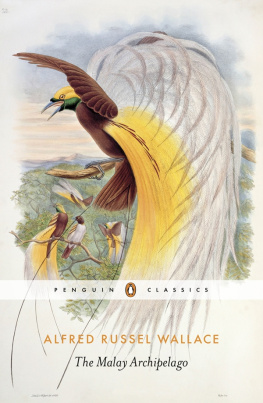


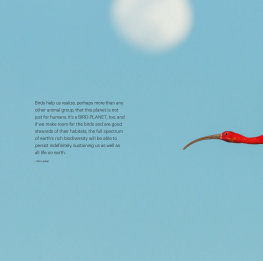
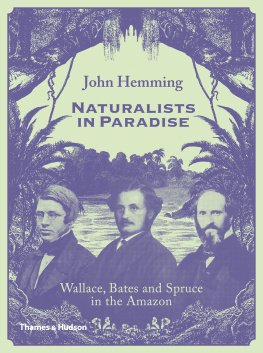
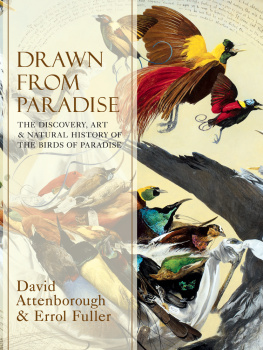
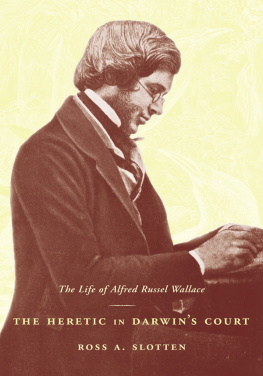
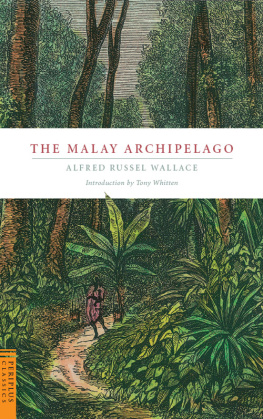


 CLASSICS
CLASSICS